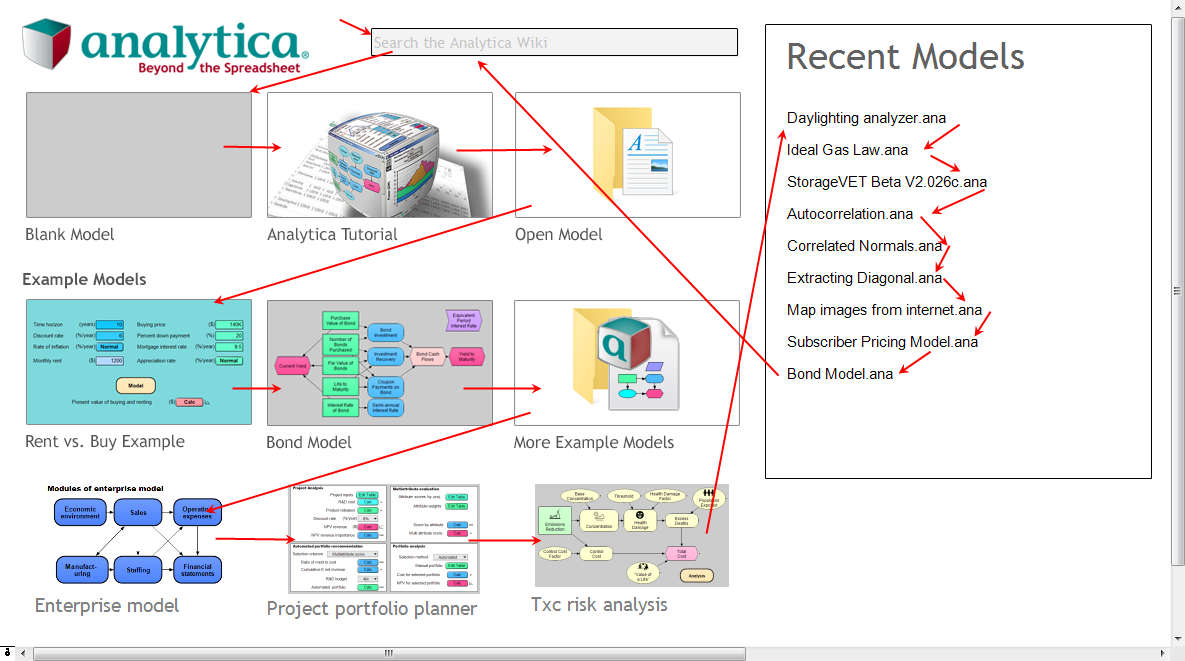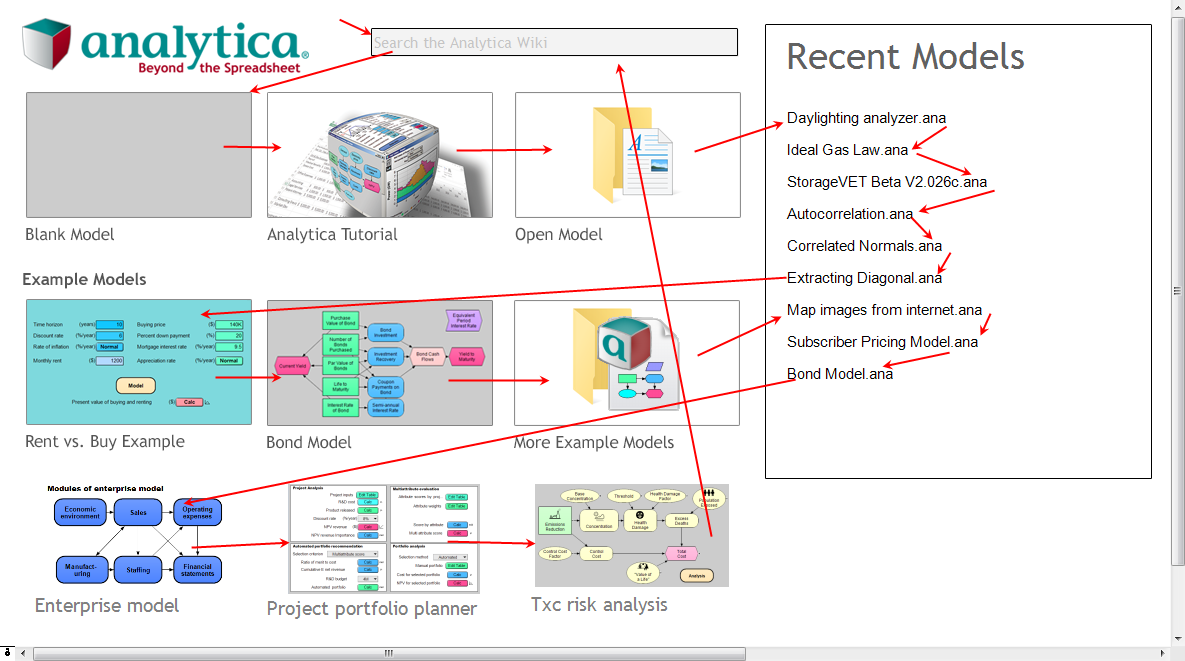Customizing the Tabbing order on a Diagram
When you press the TAB key in a diagram, it selects the "next" selectable node after the current selected node. Shift+TAB selects the "previous" selectable node. If you haven't select a node yet, it selects the "first" selectable node. Similarly, when you enter a value into an input node and press Enter, it moves to the "next" node. The is handy for someone going through a set of user inputs to specify values.
The default Tabbing order visits nodes from left-to-right and then top-to-bottom. Sometimes, this might not be the most useful sequence, so this page explains how to modify the Tabbing Order.
As an example, here is the Tabbing order on Analytica's intro screen:
The first TAB takes you to the "Search the Analytica Wiki" node. Subsequent tabs visit the options and models on the left, then down the the recent models on the right. The default tabbing order would be a bit unnatural with jumps back and forth between the options on the left and the recent models:
NextInTabOrder attribute
To customize the tabbing order, you set the NextInTabOrder attribute of a node to the identifier of the node that should come next. You will need to set this attribute from the Typescript Window -- it does not appear on the Attribute panel or Object Window. Press F12 to access the Typescript Window.
To specify that NodeB comes after NodeA, simply type the following typescript command:
NextInTabOrder NodeA : NodeB
NodeA and NodeB should both be in the same diagram, of course, or this doesn't make sense (this can't be used to jump to a totally different diagram!). The main thing you need to pay attention that you are using the identifiers of the actual user input and output nodes, and not the identifier of the original variable. For example, you might have a variable named X within your model, and then you have a user input node for X, the user input node will have its own identifier, usually a randomly generated identifier such as Fo1483485521. To find the identifier of user input or output nodes, type:
Aliases of X
where X is the actual variable.
Strictly speaking, you only need to specify the NextInTabOrder attribute for those nodes for which the default ordering goes somewhere different than where you want.
The previous node
The "previous" node, which the user jumps to when he presses Shift+TAB. is determined automatically by inverting the NextInTabOrder map.
The first node
When no node is selected when the user presses the TAB key, by default the topmost, leftmost node becomes selected. To customize this, create a tiny text node with no title or description, and position it in the top-left corner of your diagram. Because of its placement, this will be the first object in the tab order, but in browse-mode a text node is not a selectable object, so its next node will be selected. You can change the identifier of this text node in its object window, if you want, and then configure its next node, e.g.,
NextInTabOrder te_StartOfTabbing : Fo8212345321
where te_StartOfTabbing is the identifier of this text node. This node will get selected in edit mode unless you also do the following:
ChangeNodeVisibility( Handle( te_StartOfTabbing ), 'Very hidden' )


Enable comment auto-refresher